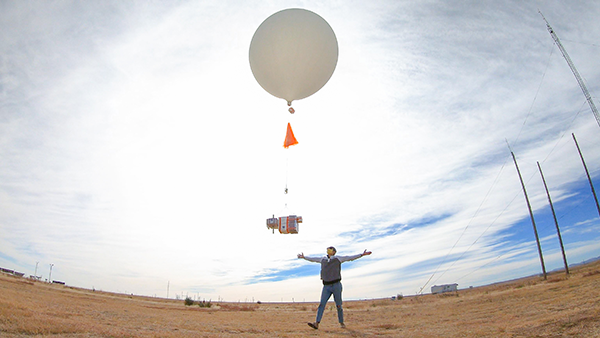A .gov website belongs to an official government organization in the United States.
A lock () or https:// means you've safely connected to the .gov website. Share sensitive information only on official, secure websites.
17 February 2021
adapted from the story by CIRES Communications

During COVID-19 shutdowns last year, ozone levels in the lower atmosphere fell by seven percent across much of the Northern Hemisphere, according to a new study from the German weather service, Deutscher Wetterdienst, with NOAA and CIRES co-authors. The researchers analyzed data from 45 stations that used balloon soundings and remote sensing instruments to measure ozone throughout the atmosphere. "The COVID-19 lockdowns are an unplanned global scale atmospheric experiment. We can learn many things from this—for example, what internationally coordinated emission controls could achieve for air quality worldwide," said Wolfgang Steinbrecht, head of the ozone group at Deutscher Wetterdienst and lead author of the study published in Geophysical Research Letters.
Ozone in the lower atmosphere (or the troposphere) acts as an air pollutant and much of it is produced by human activity, while ozone in the stratosphere (above the troposphere) occurs naturally and protects us from the Sun's harmful ultraviolet rays.
Last year, worldwide actions to contain the COVID‐19 virus closed factories, grounded airplanes and greatly reduced travel and transportation. Less fuel was burned and less exhaust was emitted, and as a result, atmospheric concentrations of nitrogen oxides and volatile organic compounds (VOCs) decreased. These substances are important for ozone production and destruction in the troposphere.

The researchers measured ozone using primarily ozonesondes on weather balloons that fly from the ground up to 30 kilometers (km) in altitude. During spring and summer last year, they found significantly reduced ozone concentrations in the troposphere across the mid-latitude and polar regions of the Northern Hemisphere, and less than in any other year since at least 2000.
"Reduced emissions in spring and summer months due to the COVID‐19 crisis lowered ozone production and very likely caused the ozone reductions we observed," said Owen Cooper, a CIRES scientist working in the NOAA Chemical Sciences Laboratory and one of the paper's co-authors.
For this study, researchers from the NOAA Global Monitoring Laboratory provided the ozonesonde observations above Boulder, Trinidad Head, California and Hilo, Hawaii. Researchers in the NOAA Chemical Sciences Laboratory provided advice on statistical methods and contributed to the data interpretation.
Steinbrecht, W., D. Kubistin, C. Plass‐Dülmer, J. Davies, D.W. Tarasick, P. von der Gathen, H. Deckelmann, N. Jepsen, R. Kivi, N. Lyall, M. Palm, J. Notholt, B. Kois, P. Oelsner, M. Allaart, A. Piters, M. Gill, R. Van Malderen, A.W. Delcloo, R. Sussmann, E. Mahieu, C. Servais, G. Romanens, R. Stübi, G. Ancellet, S. Godin‐Beekmann, S. Yamanouchi, K. Strong, B. Johnson, P. Cullis, I. Petropavlovskikh, J.W. Hannigan, J.L. Hernandez, A.D. Rodriguez, T. Nakano, F. Chouza, T. Leblanc, C. Torres, O. Garcia, A.N. Röhling, M. Schneider, T. Blumenstock, M. Tully, C. Paton‐Walsh, N. Jones, R. Querel, S. Strahan, R.M. Stauffer, A.M. Thompson, A. Inness, R. Engelen, K.L. Chang, and O.R. Cooper, COVID-19 crisis reduces free tropospheric ozone across the northern hemisphere, Geophysical Research Letters, doi:10.1029/2020GL091987, 2021.
Throughout spring and summer 2020, ozone stations in the northern extratropics recorded unusually low ozone in the free troposphere. From April to August, and from 1 to 8 kilometers altitude, ozone was on average 7% (≈4 nmol/mol) below the 2000 to 2020 climatological mean. Such low ozone, over several months, and at so many stations, has not been observed in any previous year since at least 2000. Atmospheric composition analyses from the Copernicus Atmosphere Monitoring Service and simulations from the NASA GMI model indicate that the large 2020 springtime ozone depletion in the Arctic stratosphere contributed less than one quarter of the observed tropospheric anomaly. The observed anomaly is consistent with recent chemistry‐climate model simulations, which assume emissions reductions similar to those caused by the COVID‐19 crisis. COVID‐19 related emissions reductions appear to be the major cause for the observed reduced free tropospheric ozone in 2020.